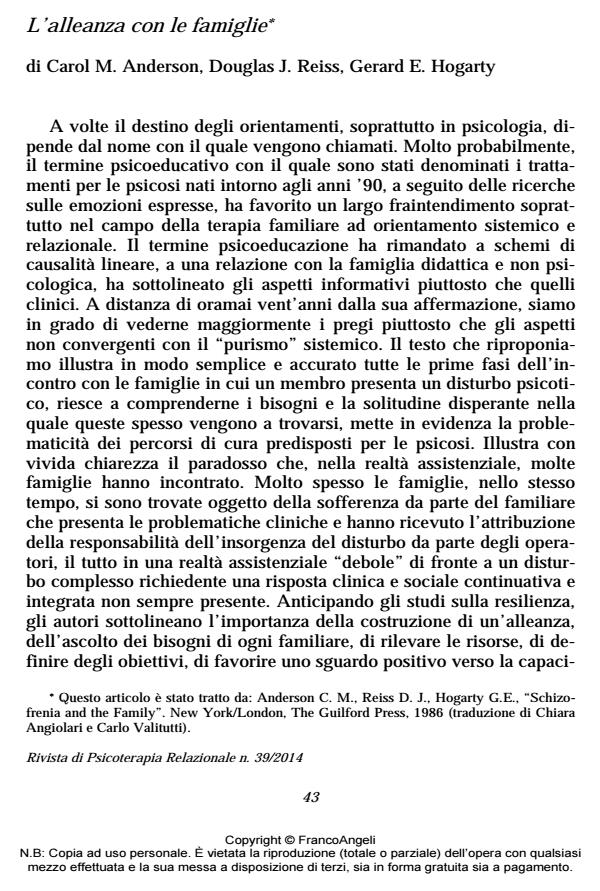Alliance with family
Journal title RIVISTA DI PSICOTERAPIA RELAZIONALE
Author/s Carol M. Anderson, Douglas J. Reiss, Gerard E. Hogarty
Publishing Year 2014 Issue 2014/39
Language Italian Pages 39 P. 43-81 File size 122 KB
DOI 10.3280/PR2014-039003
DOI is like a bar code for intellectual property: to have more infomation
click here
Below, you can see the article first page
If you want to buy this article in PDF format, you can do it, following the instructions to buy download credits

FrancoAngeli is member of Publishers International Linking Association, Inc (PILA), a not-for-profit association which run the CrossRef service enabling links to and from online scholarly content.
The major task of the associative phase of treatment is the development of an operational relationship between the therapist and all members of the family, including the patient. This is achieved by using the sessions to review the course of the disease and its treatment and to discuss the action both on the lives of family members. This is facilitated by the members of the families understand that the therapist does not believe that they are the cause of the disease, and the fact that families have the ability to positively influence its course. During the associative phase, the therapist plays the role of representative of the family, preparing for subsequent sessions and establishes a treatment contract with the patient and family that contains specific objectives, achievable and reciprocal. The contract differs between sessions that immediately follow an acute episode and that focus on patient survival in the outside world, and the last sessions that deal with long-term issues such as the gradual return to work and in society. In all the meetings of the associative phase you have to give a sense of hope for the future, without encouraging unrealistic expectations. Finally, therapists should expect some reluctance, on the part of some families in getting involved in the treatment and a certain skepticism towards their expertise and ability to help. If these challenges are accepted as normal given the particular circumstances, and if the therapist avoids becoming defensive, the binding process with patients and families will far stronger.
Keywords: Family therapy, psychoeducational family intervention, psychosis.
Carol M. Anderson, Douglas J. Reiss, Gerard E. Hogarty, L’alleanza con le famiglie in "RIVISTA DI PSICOTERAPIA RELAZIONALE " 39/2014, pp 43-81, DOI: 10.3280/PR2014-039003